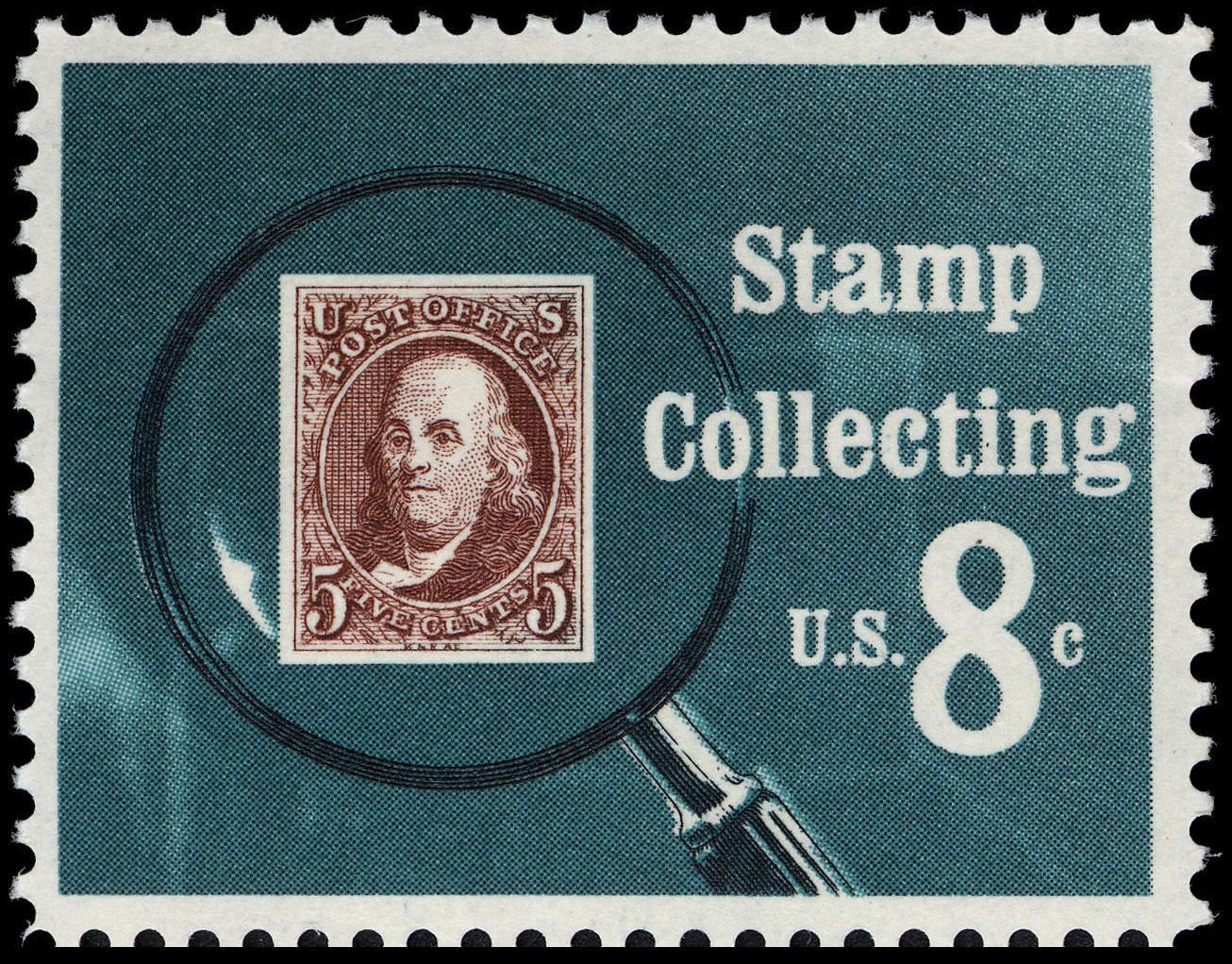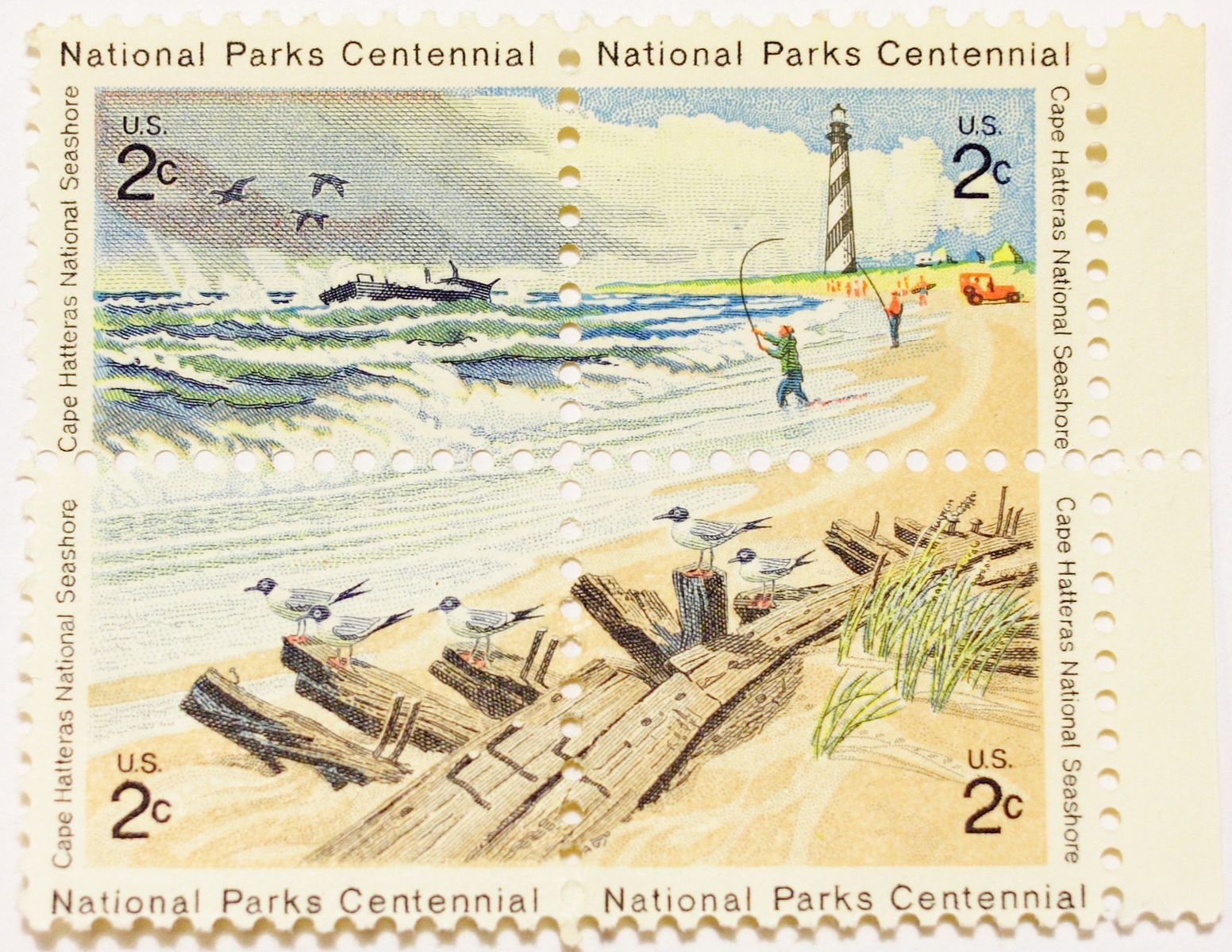Why Stamp Collectors Hated a 1972 Stamp Designed Just for Them
The “Stamp Collecting Stamp,” issued by USPS, got terrible reviews.

The early 1970s were a boom time for postage stamps. The U.S. Postal Service, which had reorganized itself at the beginning of the decade, cranked up production and was releasing ever more—and ever more interesting—designs. “Larger stamps, with more color, and many varieties of novelty, seem to be the order of the day,” wrote Boys’ Life in 1972. Where collectors once had to choose largely between different versions of the same great men, they could now get women, animals, buildings, and more.
Despite all these riches, there was still one topic you couldn’t collect a stamp about: stamp collecting. To a certain segment of enthusiasts, this was a disappointment. According to R.R. Higgins—author of the column “The Stamp Man,” which ran in the The Republic newspaper of Columbus, Indiana—philatelists frequently wrote in to the USPS specifically to request a stamp-collecting stamp.
So in October of 1972, the Postal Service announced that they would soon throw a bone to this particular species of loyal customer. The next month—on the 125th anniversary of the very first official U.S. postage stamp—they would release a commemorative stamp to honor stamp collecting. They hired one Frank E. Livia to design it, and it would cost eight cents. They even invented a new size for it: “semi-jumbo,” a compromise between the normal commemorative size and the “jumbo” size, which had recently been invented for a wildlife-themed set.

This news pleased collectors. “Stamp collecting, the hobby of millions in this country, gets its due recognition,” opined the Associated Press. “The thought occurs to me that it is also being issued during Thanksgiving season,” wrote Higgins. “No doubt the USPS is… issuing up prayers of Thanksgiving for the money we have poured into their coffers.” His and other columns printed news of the upcoming design, complete with somewhat tautological ordering instructions: “Collectors may send self-addressed envelopes with remittance… to ‘Stamp Collecting Stamp, Postmaster, New York, NY 10001.’”
Livia took his assignment quite literally. He based his design around the first ever U.S. postage stamp, which was released in 1847 and featured a portrait of Benjamin Franklin. Over the course of his career, Franklin served as postmaster general several times—first for Philadelphia, then for the British-helmed American colonies, and finally, after the Second Continental Congress, for the newly declared independent colonies.
Although stamps did not exist during Franklin’s lifetime, when the U.S. did start issuing them, in March of 1847, they chose to honor their first postmaster by using his portrait.

Livia placed an entire, exact replica of the 5-cent Franklin Stamp smack in the middle of his 8-cent Stamp Collecting Stamp. A large black magnifying glass juts into the frame, completely encircling the Franklin stamp (which, despite the instrument’s presence, seems to maintain its original size). On the right side, a white serif font declares the theme: “Stamp Collecting.” The “8” in “8c.” is huge—it looks, fittingly, like a vertical infinity sign. The background color is a swingin’ ’70s turquoise.
When the stamp was finally released, it was greeted with both confusion and derision. In the Asbury Park Press, a stamp columnist called it a “postal horror.” “Hopefully, postal officials will learn some day that there is a difference between poster art and stampic art,” he wrote, derisively. “The new issue looks more like a label issued by the West Burlap Stamp Club.” To make matters worse (the stamp is bad—and such small portions!) production was delayed for weeks, because the government’s go-to adhesive makers went on strike. (This was probably a coincidence.)

Compared to the era’s hits—such as June 1972’s four-in-one Cape Hatteras stamp quadriptych, which got rave reviews—this was a certifiable dud. Today, you can find one for sale for just 60 cents, which, with inflation, is barely more than the 8 cents it cost when it came out.
But that doesn’t mean it wasn’t worth a try. As Benjamin Franklin once said, “Perhaps the history of the errors of mankind, all things considered, is more valuable and interesting than that of their discoveries.” Of the many stamps he appeared on before and since, Franklin might like this one the best.
Stamp of Approval is an occasional column that explores the designs and backstories of the world’s strangest stamps. Have a stamp you want investigated? Stick it in an email to [email protected].








Follow us on Twitter to get the latest on the world's hidden wonders.
Like us on Facebook to get the latest on the world's hidden wonders.
Follow us on Twitter Like us on Facebook